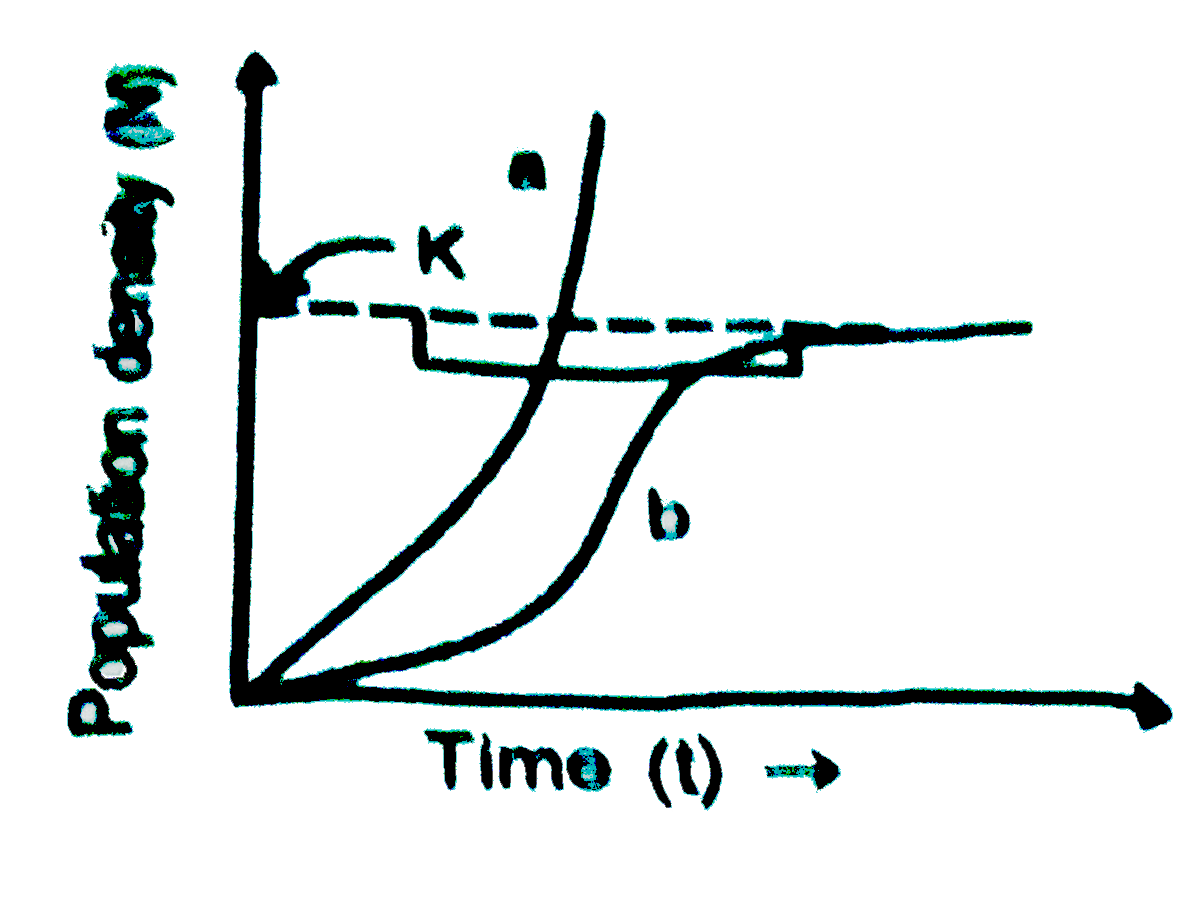Carrying capacity in equation dNdt=rN[K−Nk] is :
r
N
K
rN
The correct Answer is:C
To solve the question regarding the carrying capacity in the equation (dN)/(dt)=rN(K−N/K), we will break down the components of the equation and identify what each symbol represents, particularly focusing on the carrying capacity.
1. Understand the Equation: The equation (dN)/(dt)=rN(K−N/K) represents the logistic growth model. This model is used to describe how populations grow in an environment with limited resources.
2. Identify the Variables:
- N: This represents the current population size or density.
- r: This is the intrinsic rate of growth of the population.
- K: This denotes the carrying capacity of the environment, which is the maximum population size that the environment can sustain indefinitely.
3. Define Carrying Capacity: The carrying capacity K is a crucial concept in ecology. It refers to the maximum number of individuals of a particular species that an environment can support without degrading the habitat. In the context of the logistic growth model, as the population N approaches K, the growth rate decreases, reflecting the limitations imposed by resources.
4. Conclusion: In the equation, the carrying capacity is represented by the symbol K. Therefore, the carrying capacity in the given equation is K.
Final Answer:
The carrying capacity in the equation (dN)/(dt)=rN(K−N/K) is represented by K.
---
- N: This represents the current population size or density.
- r: This is the intrinsic rate of growth of the population.
- K: This denotes the carrying capacity of the environment, which is the maximum population size that the environment can sustain indefinitely.
The carrying capacity in the equation (dN)/(dt)=rN(K−N/K) is represented by K.
Similar Questions
Study the graph given below and answer the questions that follow :
(i) The curve 'b' is described by the following equation :
dNdt=rN{K−NK}
(ii) What does 'K' stand for in this equation ? Mention its significance.
(ii) Which one of the two curves is considered a more realistic one for most of the animal populations ?
(iii) Which curve would depict the population of a species of deer if there are no predators in the habitat ? Why is to so ?
 View Solution
View SolutionThe population growth is generally described by the following equation : dNdt=rN(K−NK) What does 'r' represent in the given equation ?
View Solution
Knowledge Check
- Question 1 - Select One
In the equation,dN/dt=rN
Ar' is called the 'intrinsic'rate of natural increase'.Br' is the parameter chosen for assessing impacts of any biotic factor an population growth.Cr' is the parameter chosen for assessing impacts abioticDAll of these - Question 2 - Select One
The Verhulst-Pearl logistic growth is described to the equation dNdt=rNK−NK, in this K stand
ATemperature in degree KelvinBIntrinsic rate of natural increaseCCarrying capacityDPopulation density - Question 3 - Select One
In the equation for S-shaped population growth dNdt=rN[K−NK] , r represents
ACarrying capacityBEnvironmental resistanceCBiotic potentialDPopulation size
which of the following option is true for verhulst Pearl logistic growth?
(A)population growth is decreased by the equation dNdt=rN[KK−N].
(B) r' represents biotic potential.
(C) applicable to a population growing in habitat with limited resources.
(D)K represents carrying capacityView SolutionFind out dN/dt when carrying capacity is 400 , population size is 300 and r is =0.01.
View SolutionIn a population showing sigmoid growth form, the population has reached its carrying capacity. What will be the value of d N/dt in this population.
View SolutionThe Verhulst-Pearl logistic growth is described to the equation dNdt=rNK−NK, in this K stand
View SolutionThe logistic population growth model
dNdt=rN(K−NK) describes a population
growth when an upper limit to growth is assumed. This upper limit of growth is known as population …….A……..and as N gets larger, dNdt ……..B…….View Solution

